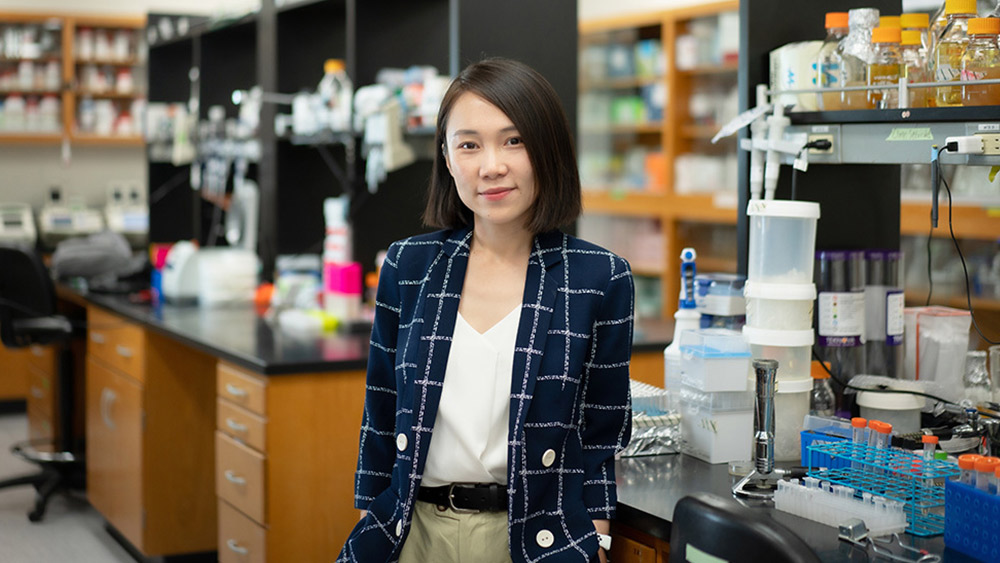
Dr. Chelsea Hu, an assistant professor in the Artie McFerrin Department of Chemical Engineering at Texas A&M University and a member of the Accountability, Climate, Equity, and Scholarship (ACES) Faculty Fellows Program, is using synthetic biology to help scientists control genetically engineered cells. Her study is the first to use modeling and a physical experiment to show the effectiveness of layered feedback mechanisms. Hu collaborated with Dr. Richard Murray at the California Institute of Technology.
“Synthetic biology is incredibly useful,” Hu said. “It allows scientists to engineer a cell by turning a specific gene on or off to make the cell behave in a certain way. The problem is that once scientists have created the engineered cell, they have very little control over how it reacts to external factors. My research is about using synthetic biology to implement the needed control mechanisms.”
Hu’s research was published in the journal Nature Communications.
“Control is the most vital aspect of engineering,” Hu said. “We can develop anything, but if we can’t control it, it’s not useful to us. The goal of my research is to help scientists have more control over engineered cells by applying feedback mechanisms.”
Engineers regularly use feedback mechanisms to control systems in a way that impacts daily life. Without feedback mechanisms, things like modern aircraft or motor vehicles could not exist.
“The best way to think about a feedback mechanism is to think about your air conditioner,” Hu said. “If you program your air conditioner to 72 degrees, when the temperature rises to 73, the unit will cool the room until it returns to 72 degrees. When the thermostat reaches the set temperature, the unit will shut off.”
However, because not all feedback mechanisms are created equal, adding them will not always improve performance. The mechanisms must be properly combined because there is often a tradeoff between speed and robustness. A quick response is usually frail, and a robust response usually takes more time. Engineers often layer two feedback mechanisms to overcome the tradeoff when designing a fast and robust system. This optimization strategy is largely responsible for the robust performance of most modern technology. Similar layering strategies are also naturally occurring in biology. When a living organism experiences a disturbance, such as an environmental, physical or chemical change, it uses layered feedback mechanisms to return to homeostasis.
“We are trying to determine if it’s a coincidence that evolution and engineering use the same layered feedback design,” Hu said. “We are also researching if layered feedback mechanisms in biology overcome the speed and robustness tradeoff in the same way they do in engineered systems. Most importantly, we are determining if using layered feedback mechanisms is the right path to gain control of synthetic biological systems.”
While layered feedback mechanisms are widely used in modern technology, Hu’s work is the first of its kind to design, model, analyze and engineer this layered architecture in living cells. After creating the living cells with the layered feedback mechanisms, Hu administered disturbances to measure the cells’ response. Her research confirms, both computationally and experimentally, that layered feedback mechanisms improve cell performance over time.
Hu’s research is the first step in figuring out how scientists can have greater control over engineered cells. In the future, this research could have a profound impact on humanity when it is integrated into the biomedical, agricultural, industrial and environmental fields.
“Once we can control engineered cells, we can use them to improve human life,” Hu said. “The cells could be used to help with things like treating bowel inflammation, improving plant growth or cleaning up chemical waste. But control in synthetic biology is still in its infancy, and we have a lot of work to do before this technology is widely integrated into our everyday lives.”
This research was partially funded by the Defense Advanced Research Projects Agency.